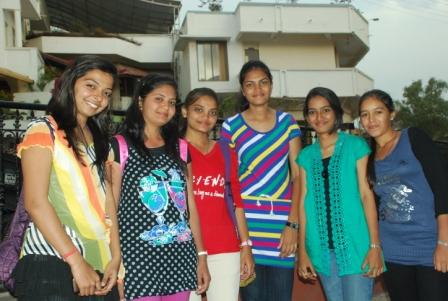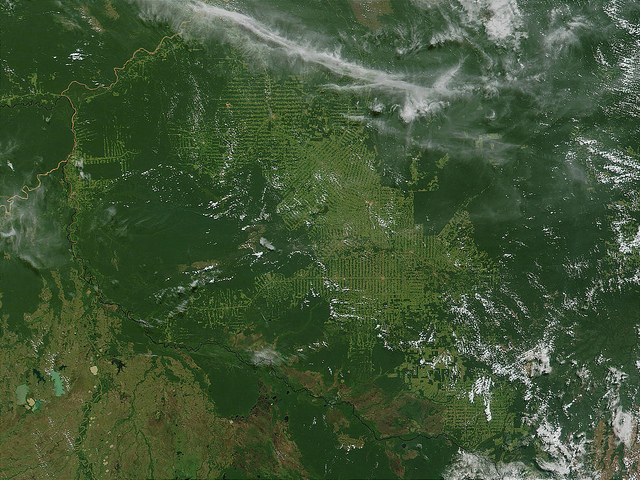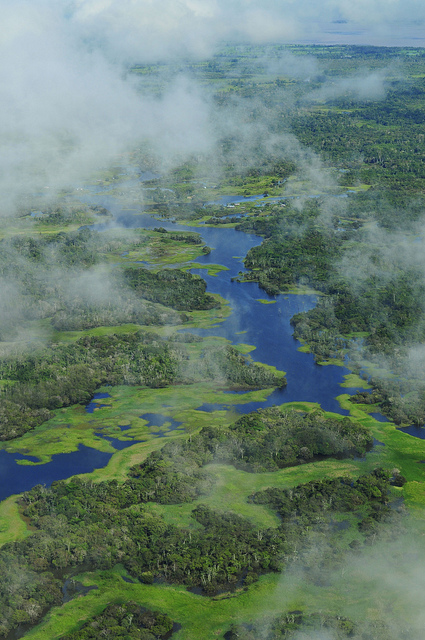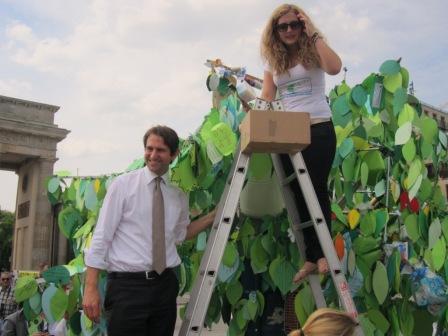Violence against women – figuring out the problem in India

These girls are all studying engineering, a field once dominated by men
What explains violence against women in India? While filming in Rajasthan in northern India, Global Ideas reporter Birgit Maaß tried to find out what ordinary men and women think about the issue – and came across some interesting perspectives and plenty of optimism.
The first time I open a newspaper in Delhi, the Hindustan Times, I notice how just how many reports focus on rape. I had already read a lot about the issue at home after mass protests broke out following the gang rape and death of a student in Delhi in December. I ask myself what the underlying reasons are and what it says about the role of women in society. It’s an issue that I think about a lot.
The first person who has little chance of evading my questions is my cameraman, Manish. He says he has no explanation for it. These men are sick in the head, he says. Women are actually revered in India, Manish adds, saying earlier the gods were all women.
From Delhi, Manish and I take the overnight train to Rajasthan. Rajesh, a friendly trader in dried onions (he says “Germans are our best customers”) is a fellow traveler in our compartment. On a 14-hour-long train journey in a four-person compartment, we naturally strike up a conversation. The next day I risk raising the sensitive issue. He’s at a loss too. “My wife is the boss at home,” he says.
Rajesh lives with his wife, young son as well as his parents. He travels a lot for work, his wife is a homemaker. That’s the best model, the men in the compartment agree, saying the women are happy with it too. “Indian wives are the best,” they say. I’m stunned by their very traditional image of a woman.
On arriving in Rajasthan, we’re received by the Brahma Kumaris, a spiritual community. We’ve come to report on their huge solar project. I’m told that I shouldn’t leave the complex in Mount Abu, a Hindu pilgrimage site, on my own as a woman as for fear of attacks. In Mount Abu, I notice a sign with a helpline number for women who are harassed. A policeman in the village tells me that such signs have put up all across the country since the attack in Delhi.

A poster in Hindi urging women to turn to the police if they are harassed
In the popular coffee shop, Café Coffee Day (its slogan is ‘Good Things Happen Over Coffee), I enter into a conversation with a family. Only the husband speaks to me and his answers turn terse when I broach the topic of women. All he says is that the perpetrators of the Delhi attack should be tried in a court, that’s all. A problem with the role of women in society? No not at all, he says.
To get a sense of what Indian women themselves think about the issue, I stop a group of young girls on the street headed towards me. They’re dressed in modern clothes and stand apart from the women in traditional saris who dominate the streets. They can hardly stop talking – the men think that women who are out in the evenings only want sex, the say. That goes for both older and younger men, the add. The women tell me they would never step out alone after 8 p.m. And even during the day, they consider it safer to be in a group. After all, they add, there’s an old saying, “a lone lady is like an open treasure.”
The girls I speak to are around 18 years old and are engineering students out on an excursion. They tell me that girls today are more successful than boys at school as well as at university. There’s a major social change underway, they say. Earlier, girls would have never entered traditionally male-dominated professions. Indian men, they say, have a hard time getting to used to this development. They told me that during their excursion, the teachers insist that they be back in their hotel by 8 p.m. while the male students are allowed to stay out until 11. “How unfair,” I say spontaneously and they all immediately agree. The budding engineers all want to work later and have equal rights. But they know it will be difficult to do that and some of them joke that it would be best if they learned karate.
Indian society is increasingly fragmenting, pitting emancipation against tradition. But does that explain the violence against women? I can’t exactly judge that. It’s probably just a small part of the problem. But I’ve learned a lot in our short conversation and I’m especially struck by the girls’ optimism.
They want to change society, they all agree. I wish them luck, we take a few photographs and then they quickly say goodbye since it’s getting dark.
Deforestation means less hydropower

Satellite image of the Rondonia region of Brazil showing the massive deforestation underway in the south-central Amazon Basin. (Photo: CC BY 2.0: Banco de Imágenes Geológicas)
The Amazon deforestation rate rocketed to 88 percent during the last year: From August 2012 to April 2013, 606 squaremiles of forest were cut down compared with 322 square miles within the previous year, claimed as a record low.
That’s the conclusion of researchers from the National Institute of Space Research, who frequently monitor forest coverage with help of satellite images. Until recently, they could announce a slowing of deforestation. But, now it seems that the fate of one of the world’s biodiversity hotspots has changed.

Trees take more water from the ground than crops do – and release more water vapour into the atmosphere. There, it turns to rain and finally feeds hydropower plants (Photo: CC BY SA 2.0: International Center for Tropical Agriculture)
The report comes on the heels of another study: scientists recently drew a connection between deforestation and energy supply. They looked at the Xingu river region in Brazil and found that cutting trees also cuts rainfall, resulting in reduced hydropower generation. That could lead to the country’s biggest dam project, Belo Monte, delivering a third less energy.
The link between deforestation and energy supply is often ignored, according to the study. “Feasibility studies of hydropower plants typically ignore the effect of future deforestation or assume that deforestation will have a positive effect on river discharge,” it says.
Rainfall does not depend on regional forest cover in the Amazon region alone. Major tropical forested regions in Central Africa and Southeast Asia also play a major role. “This dependence could affect hydropower expansion plans of a large number of developing nations in these regions “, the study concludes.
The tricky job of hammering out a climate wishlist
 The first World Youth Sustainability concluded in Berlin recently. It brought together over 150 young people from 31 countries who met policymakers and experts to talk about how their dream of a more sustainable, equitable world could be realized. Two young participants, Anne-Sophie Risse and Teresa Thalmaier, describe their experiences at the tightly-packed summit.
The first World Youth Sustainability concluded in Berlin recently. It brought together over 150 young people from 31 countries who met policymakers and experts to talk about how their dream of a more sustainable, equitable world could be realized. Two young participants, Anne-Sophie Risse and Teresa Thalmaier, describe their experiences at the tightly-packed summit.
Anne-Sophie Risse, youthinkgreen-Team Osnabrück:
Friday, May 17 – Day seven of our first World Youth Sustainability Summit. Off to an early start – my alarm rings at 6 a.m. It’s not so unusual really since I get up at that hour anyway during a normal school week. But yesterday was a long day. We spent the whole day at the Pariser Platz in central Berlin for our Tree of Hope project. It’s made of trash and has pages bearing the wishes, demands, hopes and requests from us and from other people addressed to lawmakers, governments and people around the world.
Now, early Friday morning, it’s our job to hand over the Tree of Hope to German Environment Minister Peter Altmaier. We – that is 160 young people from 31 countries – arrive at the ministry at 8 a.m. We’d come together in Berlin to draft a document expressing what we want to policymakers, business and society. Our meeting with Altmaier lasts just 15 minutes.
 In order to get a solid understanding of some of the issues that made it into the document, we’ve been listening to daily talks by various experts on climate change and other topics. Today, it’s the turn of renowned climate researcher Hans Joachim Schellnhuber. We head to the Potsdam Institute for Climate Impact Research to hear him speak. He’s very competent and understanding and begins his talk by saying “I’ll wake you up when something important comes up!” In addition to several interesting facts on climate change, I take away this impression from the talk – if there’s an acute, common problem then even nations that are sworn enemies can manage to work together.
In order to get a solid understanding of some of the issues that made it into the document, we’ve been listening to daily talks by various experts on climate change and other topics. Today, it’s the turn of renowned climate researcher Hans Joachim Schellnhuber. We head to the Potsdam Institute for Climate Impact Research to hear him speak. He’s very competent and understanding and begins his talk by saying “I’ll wake you up when something important comes up!” In addition to several interesting facts on climate change, I take away this impression from the talk – if there’s an acute, common problem then even nations that are sworn enemies can manage to work together.
I wonder if things have to go that far. With that thought, we head to the next workshop “Climate change – an intergenerational problem.” Carl-Friedrich Schleußner is the expert in this case and says that people need to live in such a way so that life for successive generations is at least just as good. It’s a topic you can discuss forever. So that the day doesn’t end on too theoretical a note, we’re shown videos by the “ClimateMediaFactory.org” – the world as a user of a network dubbed “Earthbook.” The videos were really well done.
Teresa Thalmaier, youthinkgreen-Team Windhoek:
After absorbing so many new impressions, faces, fascinating lectures and different cultures, we headed to the Konrad Adenauer Foundation.
“If you thought the last few days were grueling, then you’d better get prepared for something really tough today. But that’s what you’ll take home with you, something you can be proud of.” That’s how Helmut Spiering, the project founder of youthinkgreen, welcomed us.
Another two long hours to go before lunch. Initially, we sat in groups of maximum ten young people and racked our brains – what do we actually want? What needs to change? How can we shape our world in a more sustainable manner? How can you achieve that aim?
It sounds easier than it is. How do you formulate things that are politically correct and still compelling? But we weren’t the only ones struggling with the problem. After another discussion in a smaller circle, further groups were created. Now four larger with 40 members each worked on their wish lists. Exhausted, we dragged ourselves off to lunch to recharge our batteries. We all really needed it!
But the tough part was still to come. We were asked to discuss the four wish lists from all the groups and to combine then. We – 160 young people from 31 countries – sat excitedly in a large conference room. There were so many different cultures and languages represented. But all that wasn’t meant to hinder us.
The most difficult part often was formulating the document. Often, our statements weren’t concrete enough, at times superfluous – though there were really good ideas behind them. We gained a deep insight into how a parliament works, how politics is done on an international stage. At the end, we had our final document. It’s unbelievable what we achieved in the last weeks and I’m happy to be a part of the youthinkgreen family!
North pole changes places

Visualization of the earth’s magnetic field, connecting the North pole (orange lines) with South pole (blue lines) (Photo credit: NASA)
Climate change has many impacts on the planet, and researchers recently discovered another striking one: North Pole is moving. It’s not the ice masses in the Arctic, but acually the Northern pole of the earth’s magnetic field.
With help of satellite measurements, scientists figured out that the pole is shifting about 20 centimeters per year towards Greenland. Position of the magnetic field’s poles is determined by mass distribution around the planet. This mass distribution changes due to climate change: Accelerated melting of the poles account for 90 per cent of the movement, the study concludes.

The magnetic field protects the planet from solar winds – resulting in such nice polar lights. (Photo credit: CC BY 2.0: Nasa)
You wonder about the remaining 10 per cent? Well, you might not have known yet (so did we) that the pole is constantly moving as earth’s mass distribution changes anyway seasonally/continuously by snow- or rainfall or continental drift. The movement due to melting ice sheets adds up on this trend. For scientists, this is more than just a “nice-to-know”-fact: the satellite measurements can help climate researchers to tell, where ice is lost and in consequence provide more detail to predict climate change impacts.
Coral collapse considered evitable
Normally, we mostly present you animals threatened by climate change – but this time, we have some good news for you: Researchers recently found out that there is a way corals might actually survive the multiple threats of humanity. We actually give these small creatures a very hard live: pollution, overfishing and last but not least climate change. The latter influences the reefs by ocean acidification and rising sea temperatures.
For a long time it was thought that those cnidaria folks won’t cope with those impact. But the new study gives a glimpse of hope: If we manage to lower CO2 emission under the current level and stop overfishing, then all reefs with more than 20 per cent coral cover will survive. That’s the only chance, the researchers figured out.
For their work they took into account models for climate change, ecosystem dynamics, and carbonate processes. That way they could show that fish colonies are crucial for corals to survive, as they eat away straggling algae on the reefs resulting in more space for corals to grow.










Feedback